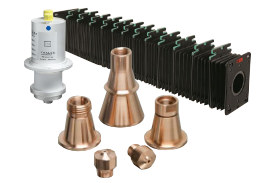> > Laser Cutting Machine Maintenance: 8-Part Quick Guide
|
|
|
Jul 10, 2025 Laser Cutting Machine Maintenance: 8-Part Quick Guide
Proper maintenance isn’t just about fixing what's broken—it's about preventing breakdowns altogether. In high-pressure fabrication environments, maintenance is often seen as an interruption to productivity. But neglecting it leads to unplanned downtime, higher repair costs, and reduced machine lifespan. This quick guide outlines eight practical strategies to help metal fabricators proactively maintain their laser cutting machines, reduce total cost of ownership, and keep production running smoothly.
1. Stock Smart Spare Parts
- Identify critical parts (e.g., RF tubes) and avoid overstocking expensive ones.
- Use service-level agreements (SLAs) for just-in-time delivery.
- Consider remote-monitoring to predict part failure in advance.
2. Prioritize Key Customer Equipment
- Identify and tag equipment vital to high-value customers.
- Focus maintenance efforts on machines serving critical contracts.
- Have contingency plans for outsourcing if key machines fail.
3. Evaluate Part Replacement Options
- Don’t default to OEM parts—newer aftermarket options may offer better performance and durability.
- Stay informed about technological upgrades for existing equipment.
4. Set Clear Purchasing Guidelines
- Base purchases on more than just price: factor in quality, delivery speed, support, and vendor reliability.
- Have technically qualified staff oversee complex purchases.
5. Weigh Maintenance Contracts & Warranties
- Consider extended warranties or PM contracts if in-house maintenance is lacking.
- Understand what’s covered, including service calls, parts discounts, and coverage limits.
6. Follow OEM Maintenance Schedules
- Stick to recommended schedules to avoid costly downtime.
- Maintain logs or automated systems for tracking conditions and predicting issues.
- Ensure the shop environment (air, power, water, temp) meets machine specs.
7. Train and Empower Technicians
- Invest in skilled techs to reduce external service needs.
- Let experienced staff document procedures and mentor others.
- Use skills matrices to assess and build team capabilities.
8. Engage the Whole Team
- Share KPIs like equipment uptime and maintenance effectiveness.
- Use visual tools to communicate goals and progress.
- Motivate teams with recognition or incentives to support maintenance focus.
|



